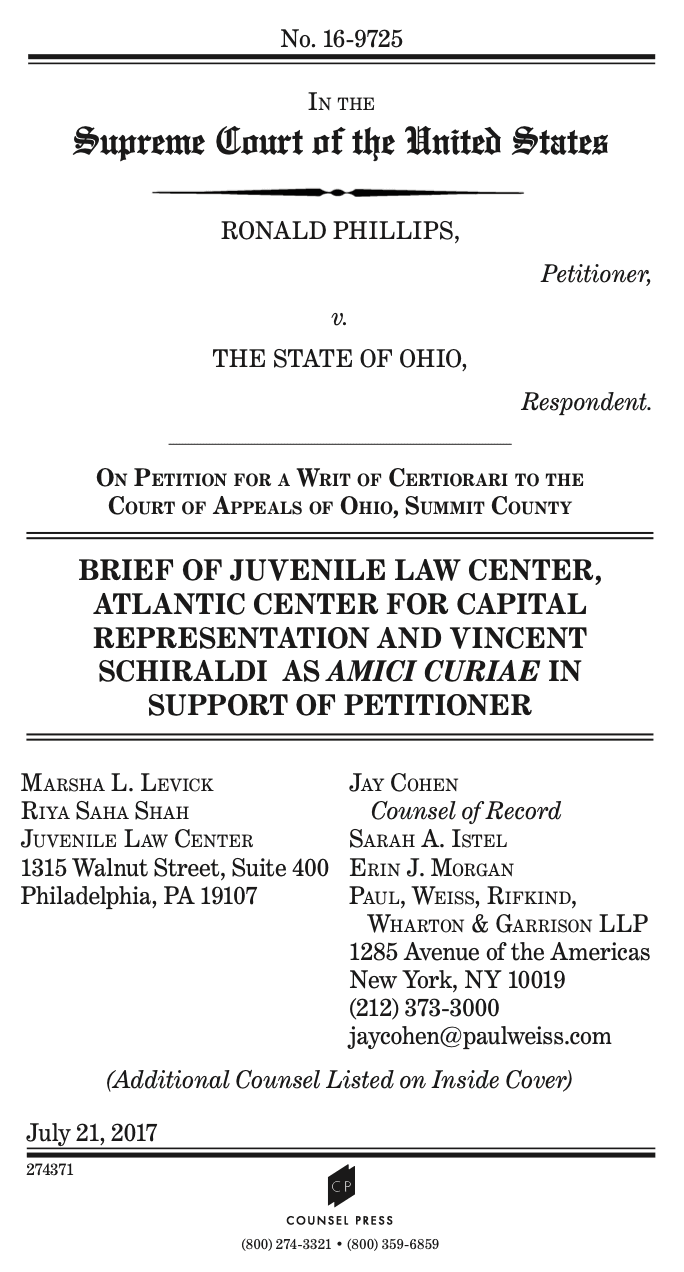
Summary of Argument
This Court has long recognized that imposition of the death penalty upon certain classes of individuals constitutes excessive punishment in violation of the Eighth Amendment. Juveniles are exempt from that punishment based upon this Court’s recognition of their diminished culpability due to characteristics that typify youth—immaturity, impetuosity, susceptibility to negative peer influences and a lack of fully formed character. These characteristics,more than the specific age of the offender, determine the class of individuals for whom the death penalty is unconstitutional.
Although this Court has acknowledged that it is the characteristics of youth that require constitutional protection, and not a specific chronological age, it has also recognized that an age-based line must be drawn. In determining where to draw this line, the Court has looked to the current national consensus on the demarcation of adulthood, as reflected in state sentencing practices and legislation, as well as the scientific community’s own growing understanding of human development. Accordingly, in the context of the death penalty, this Court has repeatedly revised or altered its articulation of the line between juveniles and adults to account for society’s evolving views.
In Roper v. Simmons, 543 U.S. 551, 562 (2005), this Court ruled that subjecting juvenile offenders who committed capital crimes to the death penalty prior to 18 constituted cruel and unusual punishment in violation of the Eighth Amendment. Citing developments in the law and social science that reflected a new national consensus regarding juvenile development, the Court overruled its earlier decision in Stanford v. Kentucky, 492 U.S. 361 (1989), which upheld the death penalty for juveniles convicted of homicide when they were 16 or 17 years old.
In the twelve years since Roper was decided, the objective indicia of national consensus—including state death penalty and sentencing practices, legislative developments, and empirical research— have once again evolved, requiring this Court to revisit prior case law and compelling the conclusion that the line between childhood and adulthood must now be moved to 21.
From laws regulating the consumption, purchase or possession of tobacco and marijuana to laws extending the period of time for provision of child support and foster care, recent legislative changes evince a national consensus that individuals under the age of 21 should be considered less culpable for their criminal acts than fully-developed adults. Moreover, these legislative trends have been informed by neuroscientific research, which demonstrates that the portions of the brain associated with the developmental characteristics identified in Roper, including the regulation of judgment and self-control, are still maturing in individuals at least through 21.
Accordingly, the age range this Court associates with the characteristics of youth is ripe for revisit. This Court should grant certiorari in order to reexamine this issue and extend the line of adulthood to 21 in accordance with the nation’s clear consensus.